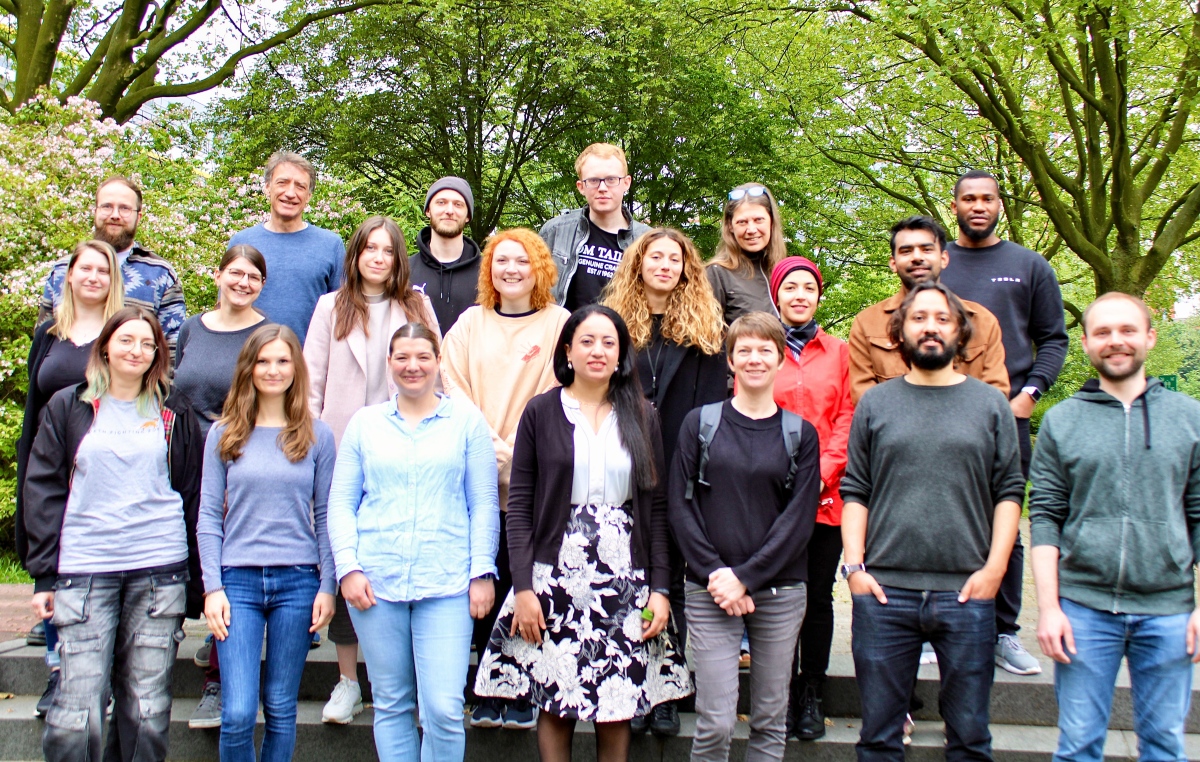Aquatic Microbiology

Meckenstock Group
The research group is investigating:
- Anaerobic degradation of polycyclic aromatic hydrocarbons
- Microbial ecology and environmental processes of pollutant degradation
- Structure and functioning of microbial communities in impaired waters
- Microbial processes in oil films
1. Anaerobic degradation of polycyclic aromatic hydrocarbons (PAHs)
PAHs belong to the most frequent and hazardous but unfortunately also to the most recalcitrant organic pollutants in the environment. When aquifers or saturated sediments are loaded with high amounts of organic compounds they rapidly turn anoxic. The majority of the microbial degradation has thus to proceed without molecular oxygen as electron acceptor for respiration and as reactive cosubstrate. Thus, microbes have developed alternative biochemical reactions to activate such chemically inert compounds and to overcome the resonance energy for ring cleavage. However, the involved processes of anaerobic PAH degradation are largely unknown.
In the past, we elucidated the anaerobic degradation pathways of 2-methylnaphthalene and naphthalene as model compounds for PAHs (Meckenstock and Mouttaki, Curr. Opp. Biotechnol. 2011). Methylated PAHs are activated via fumarate addition to the methyl group whereas naphthalene is activated by carboxylation producing naphthoic acid (Figure 1) (Mouttaki et al., Environ. Microbiol. 2012). In the following, we discovered novel enzyme reactions such as naphthoyl-CoA-reductase which overcomes the resonance energy of the bicyclic ring system in a two-electron reduction step (Eberlein et al., Environ. Microbiol. 2013).
Currently we are focusing on the elucidation of the central naphthoyl-CoA degradation pathway as an example how the ring system of PAHs can be broken down by microorganisms and are extending this knowledge to studying the anaerobic degradation of larger PAHs.
2. Microbial ecology and environmental processes of pollutant degradation
Recently, we discovered life in oil as a new and extreme habitat on earth (Meckenstock et al., Science 2014). At the world’s largest natural tar lake (Pitch lake, Trinidad-Tobago) we found that microorganisms can thrive in tiny water droplets (1-3 µl) enclosed in the oil ascending in the natural seep. Thus, we propose that biodegradation in oil reservoirs is not only taking place at the oil-water-transition zone but also from within the oil phase via enclosed water (Figure 2). In the frame of a recent ERC-advanced grant to Rainer Meckenstock, we currently study the microbial ecology and degradation processes in such water droplets and what there relevance is for degradation of oil reservoirs.
In contaminated aquifers, not only oxygen but also electron acceptors for anaerobic degradation are quickly used up, which is a major limitation for biodegradation. By employing high resolution monitoring we could show that this leads to a depletion of electron acceptors in the center of the plume and a preferential degradation of pollutants at the contaminant plume fringes. We thus developed the plume fringe concept which replaces the established redox zonation model (Meckenstock et al., Environ. Sci. Technol. 2015). Here, we also study long distance electron transport by cable bacteria which improve the electron flux at the plume fringes by oxygen or nitrated driven sulfide oxidation recycling sulfate.
3. Structure and functioning of microbial communities in impaired waters
Microbial communities perform biochemical processes that are relevant for the health of entire aquatic ecosystems. We are interested in understanding the fundamental principles that govern the structure and functioning of microbial communities. In particular, we seek to understand the link between the taxonomic composition of microbial communities and processes performed by microbial communities as a whole in healthy and impaired waters, such as polluted groundwater and rivers exposed to anthropogenic stressors. We integrate theoretical modelling, field surveys, and controlled experiments to answer the following research questions:
- Which factors control the sensitivity of microbial communities to anthropogenic stressors?
- How can successful recovery of impaired communities be achieved?
- How can we distinguish healthy and disturbed communities?
